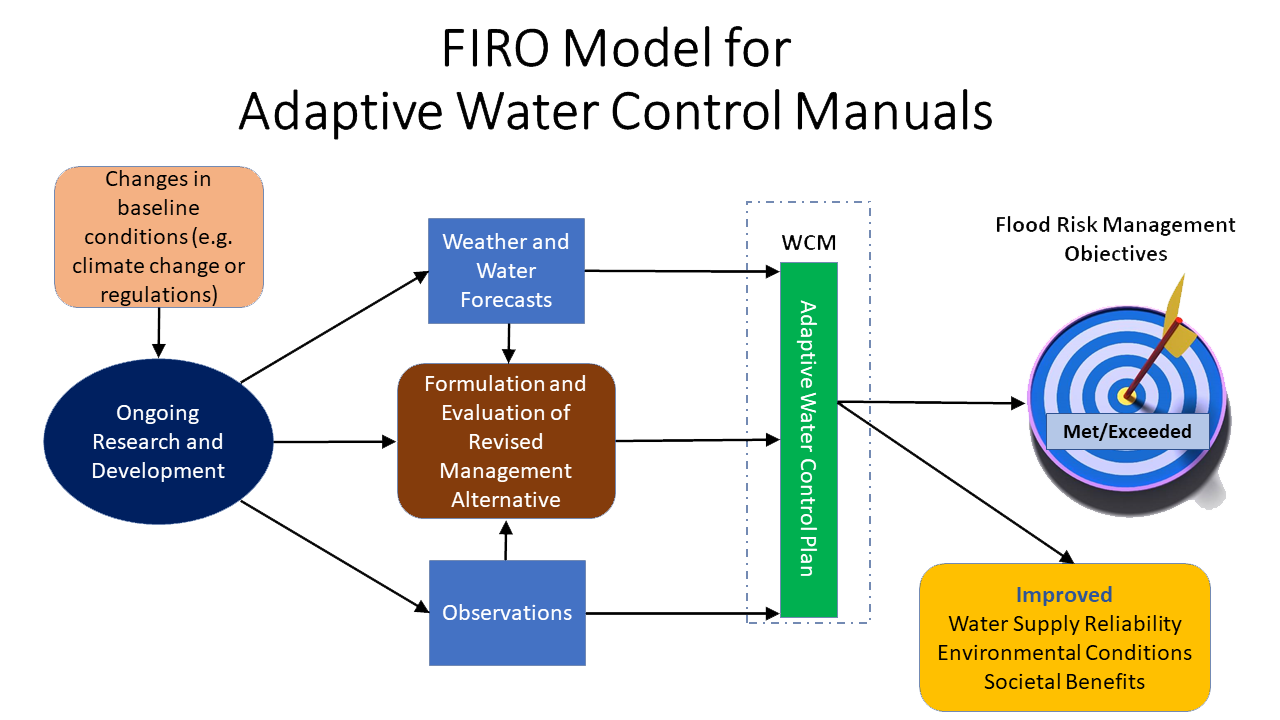Forecast Informed Reservoir Operations
FIRO is a reservoir-operations strategy that better informs decisions to retain or release water by integrating additional flexibility in operation policies and rules with enhanced monitoring and improved weather and water forecasts (American Meteorological Society; 2020).
FIRO is being developed and tested as a collaborative effort in the Russian River Basin (Lake Mendocino, Lake Sonoma), the Santa Ana River Basin (Prado Dam, Seven Oaks Dam), the Yuba-Feather River Basins and the Green River (Howard Hanson Dam) that engages experts and stakeholders in civil engineering, hydrology, meteorology, biology, economics and climate from several federal, state and local, universities and others. There is significant interest and support for developing FIRO at other appropriate locations in the Western U.S. and elsewhere.
 |
 |
 |
 |
 |
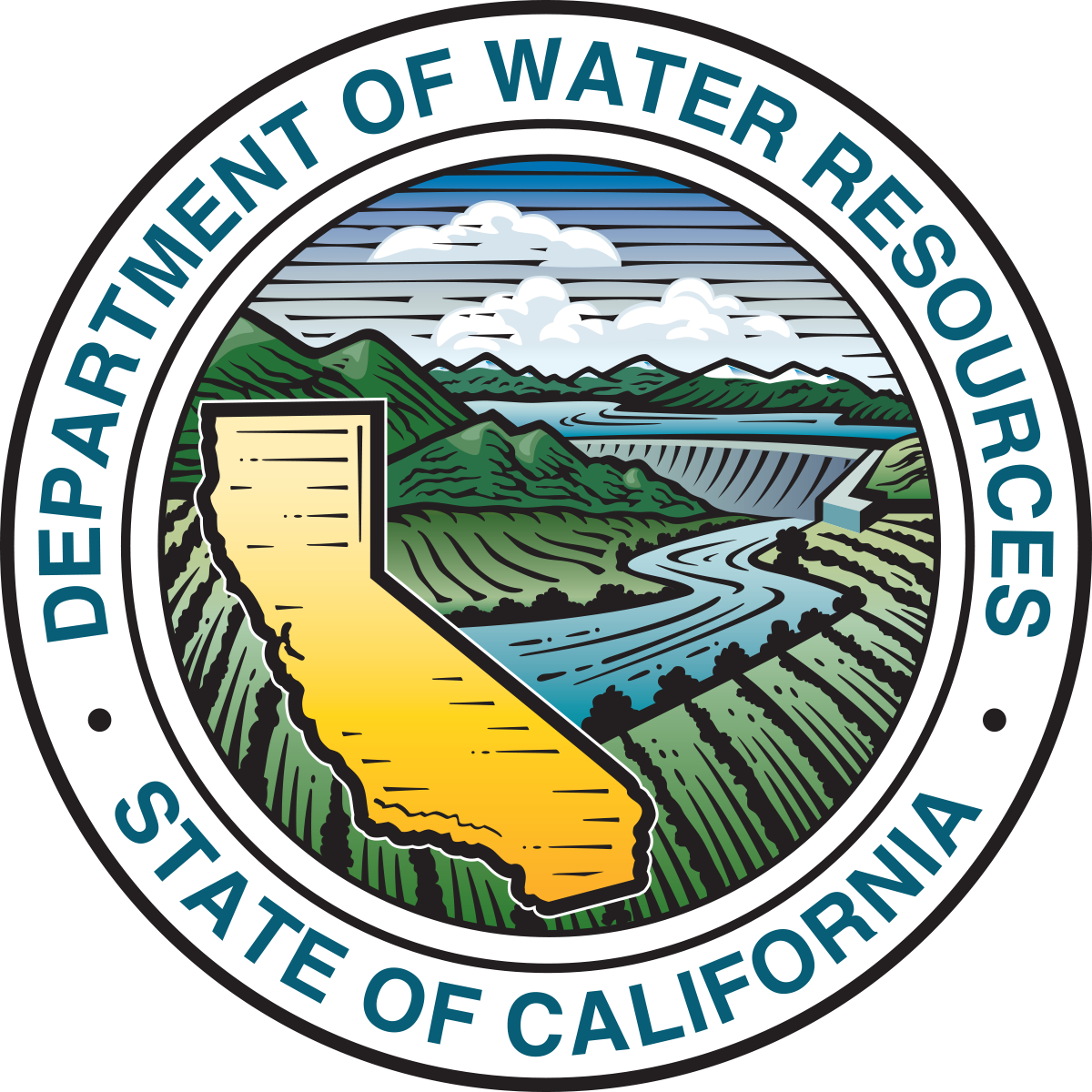 |
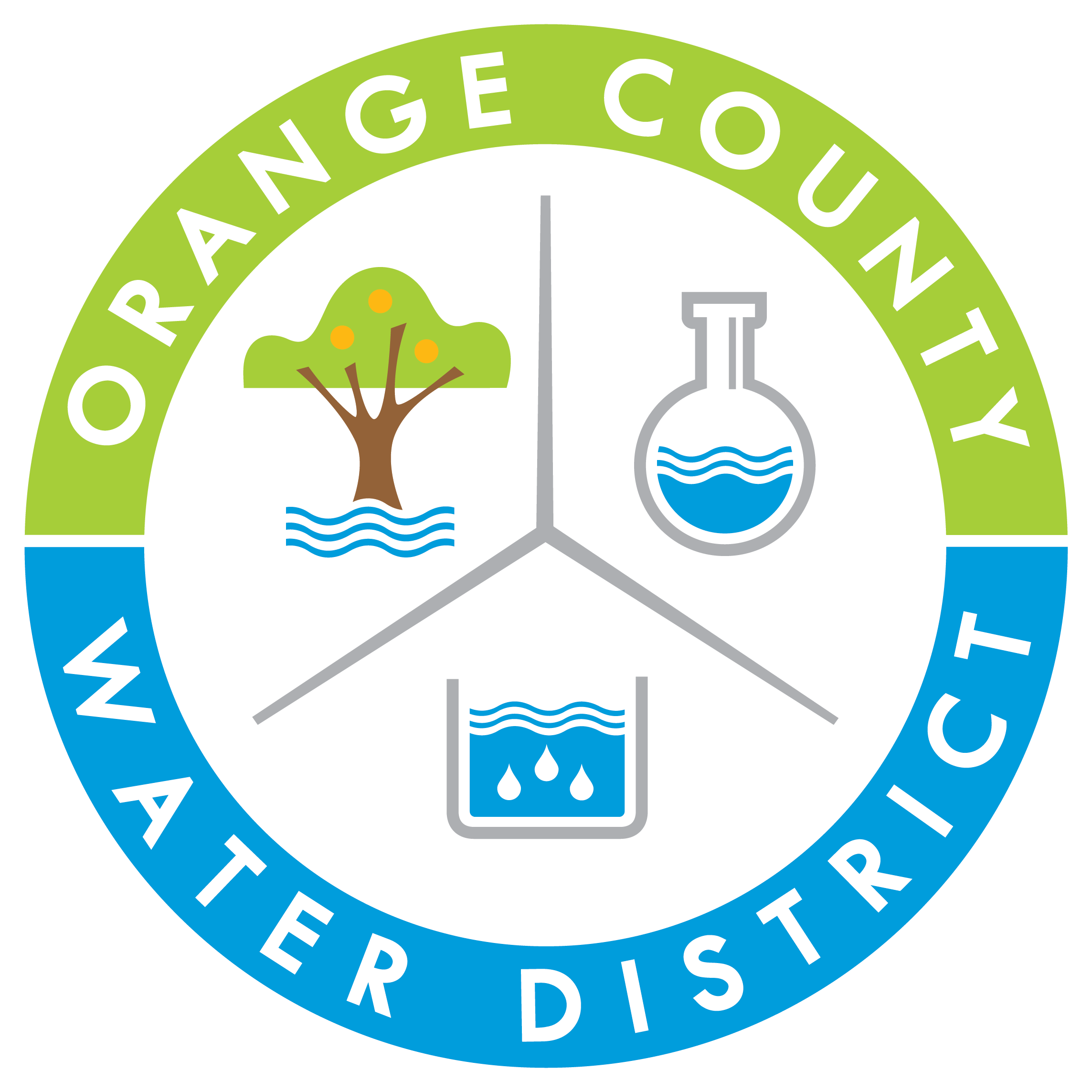 |
 |
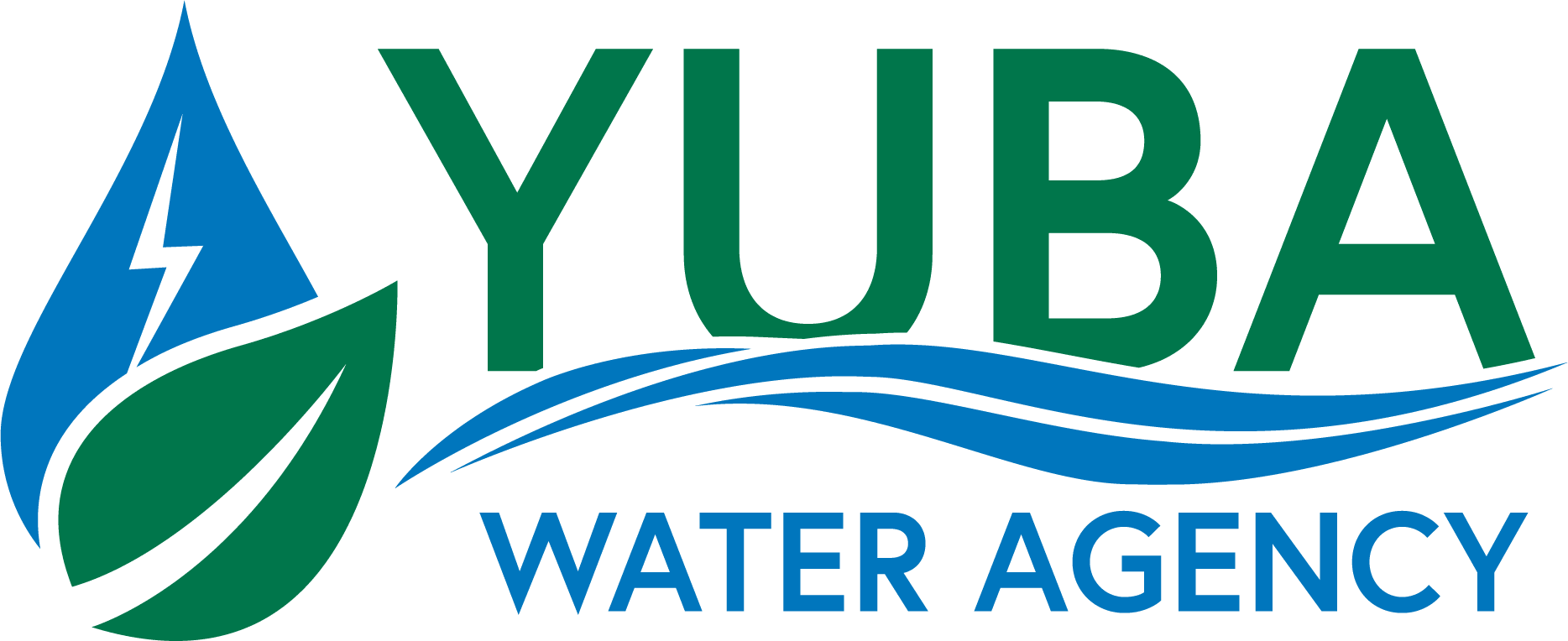 |
 |
 |
 |
 |
 |
 |
 |
 |
Overview
Goals
The goal of FIRO is to develop, demonstrate, and implement tools and science that enable more effective management of reservoirs by leveraging improvements in weather and water forecasts. FIRO creates a natural linkage between research, applications, technology, reservoir operations and water control manuals to enable continuous improvement based on state-of-the-science.
Challenge
The storage and distribution of water are essential. Dams and reservoirs mitigate the impacts of flood events, generate clean renewable power and ensure water availability into the summer dry months. Faced with growing demands for water supply, the answer for many years was to simply build more dams but the best dam sites have been constructed and the cost of planning and construction has become prohibitive.
At the same time, recent increases in climate variability and projected climate change are challenging the assumptions used to design and operate existing dams and reservoirs. More frequent and greater extremes in floods and droughts are likely. Adapting to this new paradigm of climatic uncertainty and extremes will require new approaches to water management, including more efficient operation of our existing dams and reservoirs. Enter FIRO.
Background
Reservoirs are often operated for multiple purposes that commonly include some combination of water supply, flood control, hydroelectric power generation, recreation, navigation, and environmental enhancement. Managing multiple purposes is a challenging balancing act between sometimes competing needs.
When federal funds are used to construct a dam that includes flood mitigation as an authorized purpose, the U.S. Army Corps of Engineers (USACE) becomes responsible for managing that purpose pursuant to Section 7 of the U.S. Flood Control Act of 1944. Given the consequences of dam failure, the USACE takes their responsibility very seriously. A Water Control Manual (WCM) is developed for each Section 7 or USACE dam that includes flood control as an authorized purpose. The WCM guides water release decisions for the dam. WCMs are generally completed within a year of project completion and are updated if conditions or the physical attributes of the project change. Many WCMs have not been meaningfully updated for several decades due to a lack of USACE appropriations.
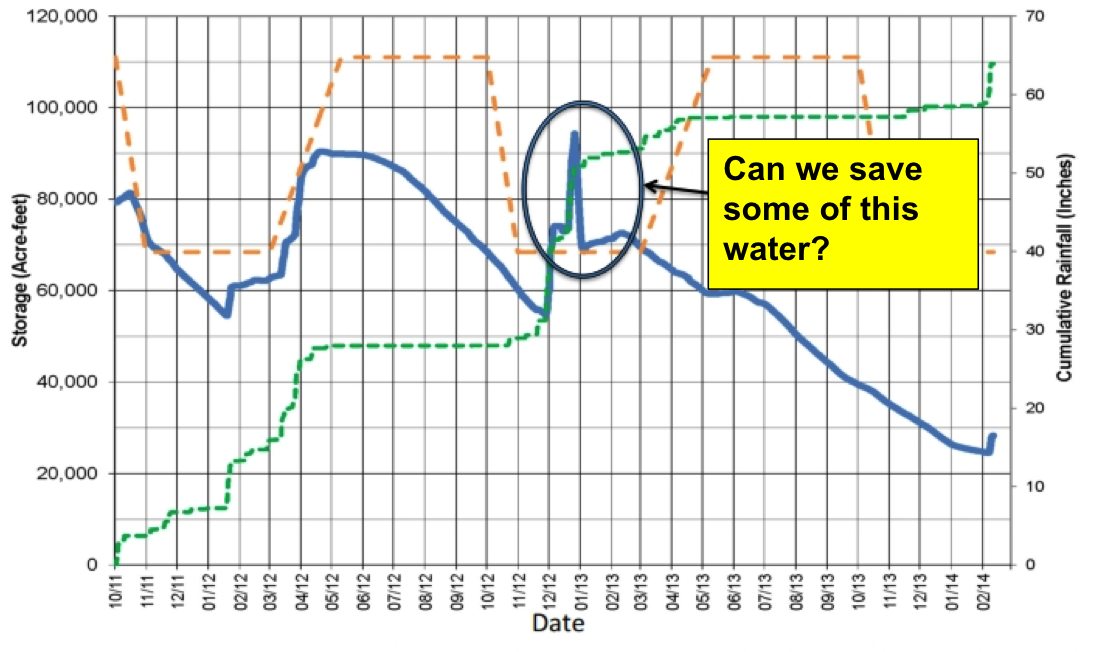
Figure 2. In late December 2012 an Atmospheric River storm greatly increased the amount of water in Lake Mendocino (thick blue line shows reservoir storage; green dashed line shows cumulative rainfall). The “rule curve” (dashed orange line) led to the release of this water. The lack of later rains (to February 2014) led to drought conditions and extremely low lake levels. Figure courtesy of F. M. Ralph (UC San Diego/ Scripps /CW3E; mralph@ucsd.edu) and J. Jasperse (Sonoma Water) – FIRO Steering Committee Co-Chairs
A major element of a WCM is the “guide curve.” The guide curve describes the maximum allowable reservoir storage to meet flood control objectives. The risk of of a flood event can vary seasonally and as a result many guide curves vary seasonally as well. Figure 2. shows a typical guide curve where the risk of flooding is greatest in the winter and almost non-existent in the summertime.
When dam construction in the U.S. peaked in the 1960s, skill in weather and water forecasting was limited. As such, the procedures used to develop guide curves and for evacuating excess impounded water in flood control reservoirs relied solely on observations (“water on the ground”) and the climatological likelihood of future weather. These procedures are codified in the WCM and water managers are largely compelled to use them.
In some regions of the U.S., skill in weather and streamflow forecasting has improved dramatically over the last 50 years through investments in research, modeling, monitoring, and technology. One region where forecasts have shown significant improvement is along the west coast of the U.S. Here, the key to accurately predicting precipitation and flooding is linked to an understanding of the dominant rainfall producing mechanism, atmospheric rivers (ARs). ARs have both positive and negative impacts and come in all strengths from weak to extreme. Extreme ARs are the cause of most major wintertime flood events along the west coast while smaller beneficial ARs provide critical water supply.
As forecast skill has improved, innovative reservoir operators have developed procedures for leveraging improved forecasts within the guidelines established in the WCM. More recently, the USACE has updated their regulations to allow for explicit use of forecasts where appropriate.
Water Affiliates Group
The Water Affiliates Group (WAG) is a new forum for water leaders to learn how advances in atmospheric river and drought research can be used to improve water management, mitigate flood risk and increase water supply reliability. It connects like-minded water managers to share best practices in Forecast-Informed water operations and provides practical tools to support core water management services.
American Meteorological Society, cited 2020: Forecast-informed reservoir operations. Glossary of Meteorology. [Available online at http://glossary.ametsoc.org/wiki/Forecast-informed_reservoir_operations.]

